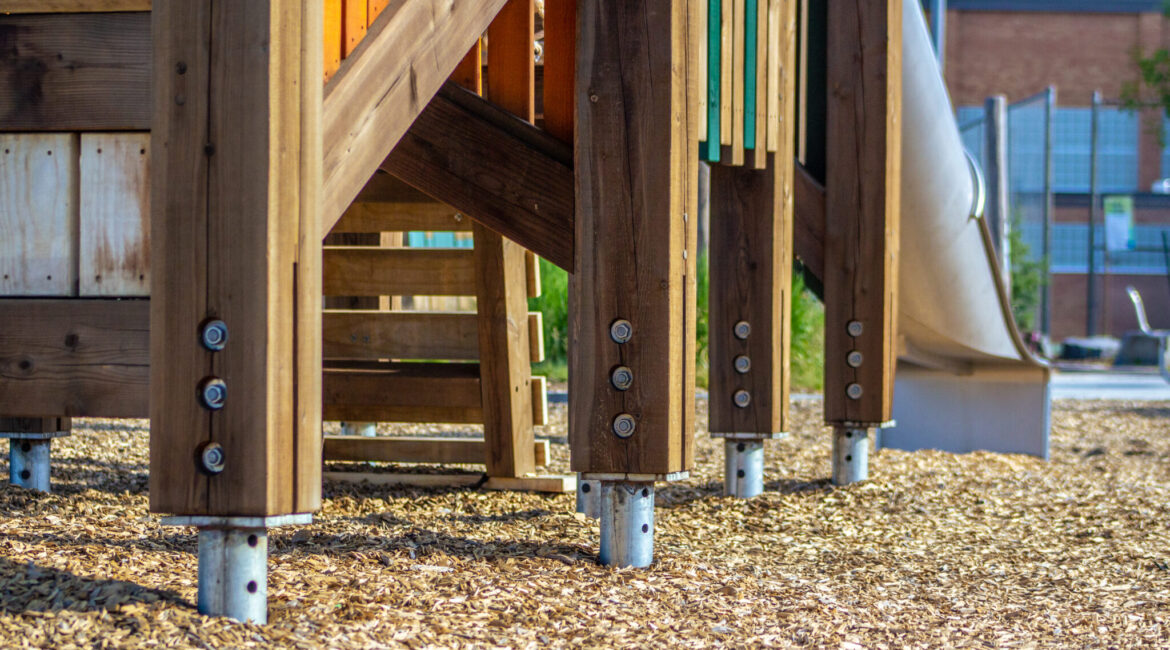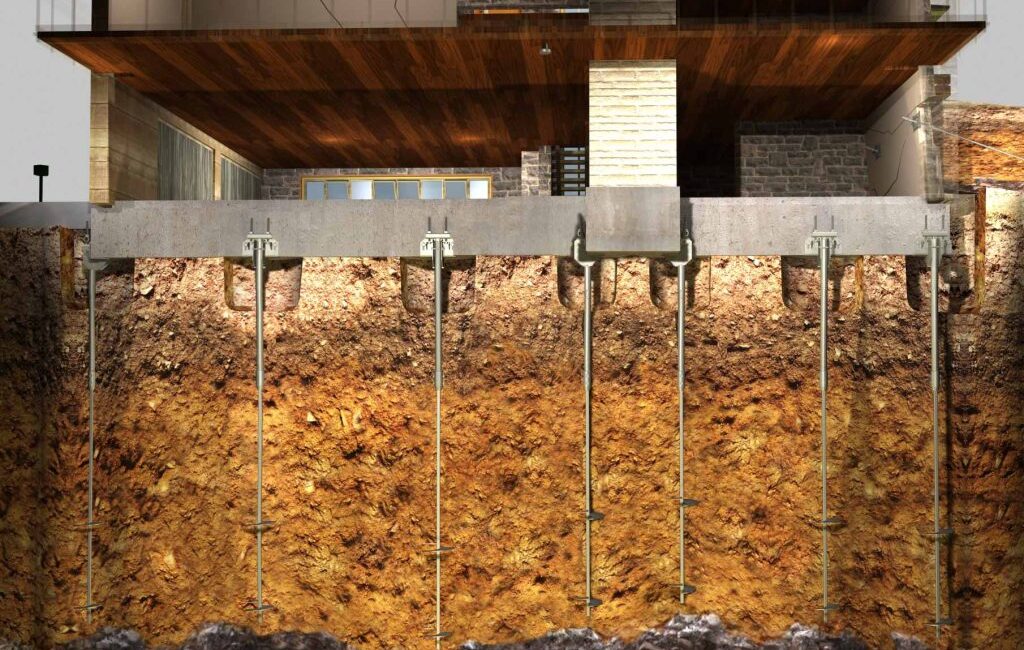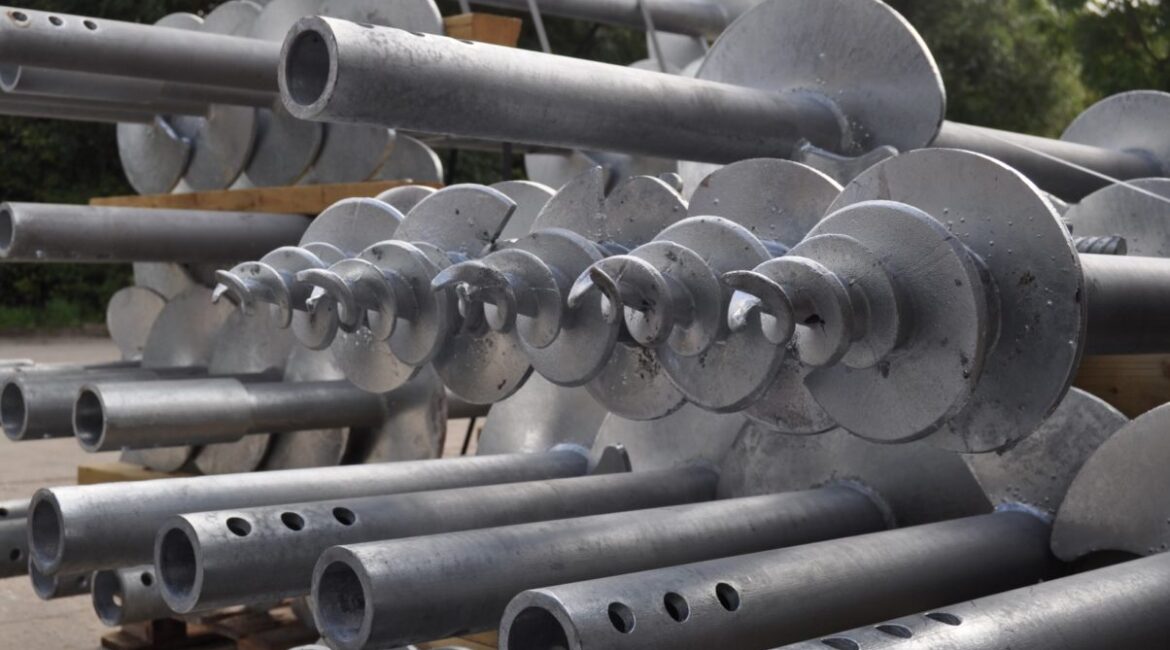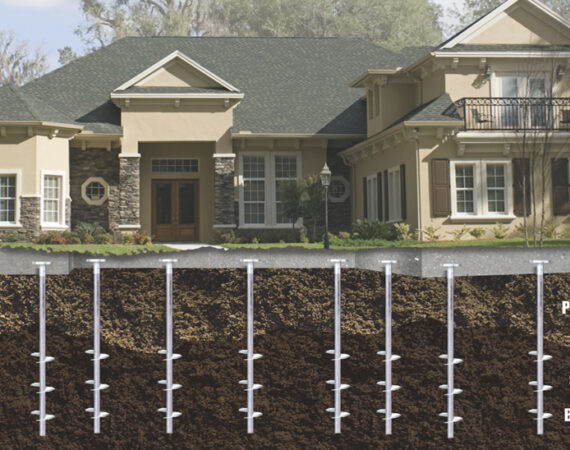Design and Engineering Considerations for Helical Screw Foundations
Helical screw foundations have revolutionised the field of foundation engineering, offering a versatile and efficient alternative to traditional methods. The success of these foundations lies not only in their innovative helical design but also in the careful consideration of various factors during the design and engineering phases. In this article, we explore the key considerations that influence the design of helical screw foundations, encompassing soil conditions, load requirements and structural considerations.

Soil Conditions
Arguably the most critical factor influencing the design of helical screw foundations is the nature of the soil at the construction site. Different soil types exhibit varying levels of bearing capacity and settlement characteristics. Helical screw foundations are particularly advantageous in challenging soil conditions such as soft, loose or expansive soils.
Engineers must conduct a thorough geotechnical investigation to understand the soil profile. This includes assessing factors like soil composition, moisture content and shear strength. The findings guide the selection of helical screw configurations, including the size and spacing of helical blades, ensuring optimal load-bearing capacity and stability.
Load Requirements
The magnitude and distribution of the loads that a structure will impose on its foundation are fundamental considerations in helical screw foundation design. This includes both vertical and lateral loads. Vertical loads, such as the weight of the structure and its contents, are supported by the helical screw’s axial capacity. Lateral loads, resulting from wind or seismic forces, necessitate additional engineering considerations, such as the inclusion of helical screw anchors or extensions.
Calculations for load requirements involve a meticulous analysis of the structure’s design and intended use. Factors like live loads, dead loads, and environmental forces are evaluated to determine the most suitable helical screw configuration for optimal load-bearing performance.

Structural Considerations
The specific requirements and characteristics of the structure being supported play a pivotal role in helical screw foundation design. This involves considerations such as the structure’s geometry, foundation depth and the need for additional lateral support. For example, tall structures or those subjected to high wind forces may require helical screw foundations with greater lateral resistance.
Structural considerations also extend to the adaptability of helical screw foundations for different types of structures. Whether supporting residential homes, commercial buildings or industrial facilities, the design must be tailored to meet the unique demands of each application.
Environmental Factors
Local environmental conditions, such as the potential for corrosion in coastal areas or exposure to harsh climates, are integral to the design process. The choice of materials, protective coatings and corrosion-resistant alloys for helical screws ensures the longevity and durability of the foundation in diverse environmental settings.
Building Codes and Standards
Compliance with building codes and industry standards is non-negotiable in helical screw foundation design. Engineers must adhere to local regulations and guidelines governing foundation design and construction. This includes factors like minimum safety factors, allowable bearing capacities and quality control measures to ensure the reliability and safety of helical screw foundations.

The design and engineering considerations for helical screw foundations are a delicate balance of science and art, combining geotechnical knowledge with structural expertise. By meticulously addressing factors such as soil conditions, load requirements, structural considerations, and environmental factors, engineers can ensure the successful implementation of helical screw foundations in a wide array of construction projects. As technology advances and the demand for sustainable and resilient foundation solutions grows, the role of helical screw foundations is likely to expand, contributing to the future of innovative and reliable construction practices.

